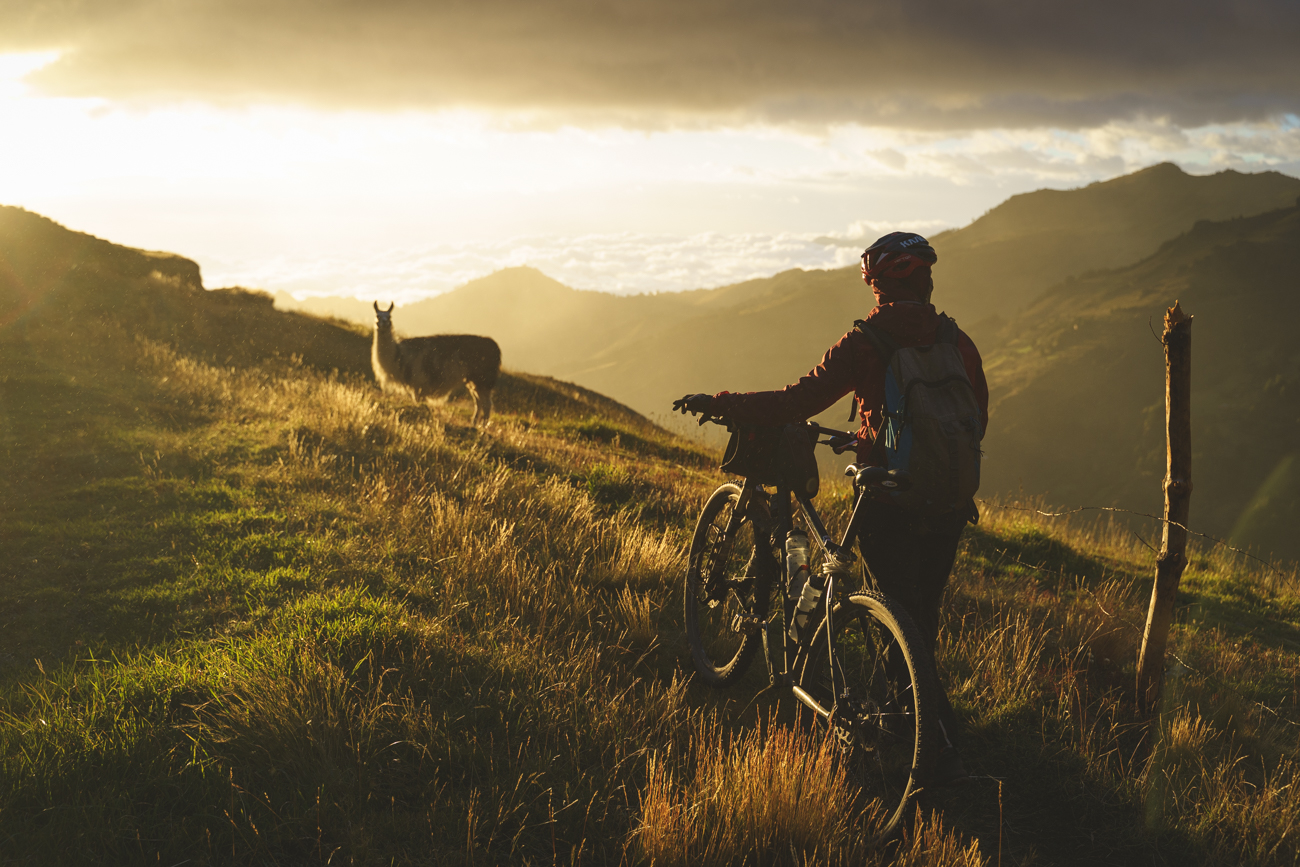To the west, the sun is setting over the clouds which cover the Ecuadorian Lowlands, towards the Pacific Ocean. Above us another blanket of clouds is rushing over the 4000 meter peaks which stand to the east. In the last moments of daylight and after battling the wind for the entire day we’re quite desperate to find a sheltered and quiet camping spot. A lama watches undisturbed as we search the nearby pastures searching for a flat and sheltered place. On the road locals mounted on horse back are hurrying back to the nearby village, glancing at the two gringos in search for a place to spend the night.
One thing which shocked us in the first weeks in Ecuador was how quick was the transition between daylight and pitch darkness. Coming from a Europe and being used with a much longer twilight it was shocking to see how you can go from the actual sunset to complete darkness in less then 20 minutes. Things get even worse when it’s cloudy and the general feeling is that someone, somewhere abruptly turns off the light and that if you don’t stop early to find a camping spot then you don’t have too much time to search around and it’s best to settle with what you have instead of continuing through the night.
The last 100 kilometers since Quilotoa, going on the western side of the Andes have been equally wild and remote. Small villages, dirt roads and serious climbs in an area of Ecuador which seems quite disconnected from the rest of the country. From time to time you encounter an old colonial town where you can resupply and then it’s back to to the wild. Small settlements, small and damp houses with earthen walls and straw roofs, small children running to and from small local schools, cows and lamas. It’s different from the dramatic scenery of the big volcanoes like Cotopaxi, Chimborazo and Quilotoa but different in a good way. It feels like it’s seriously off the beaten track, and for this we have to thank the Dammer brothers, Cass Gilbert and the Pikes for exploring these places and putting up some tracks and route descriptions in place which have inspired us to get here.
At the same time even if the altitudes you tackle are considerably lower than the ones you encounter in neighboring Peru, Ecuador has been quite physical until now. It’s probably the combination of altitude, really steep and broken roads or tracks, winds and drizzle which finally brings you down. We were lucky that by starting our trip in Colombia we had the batteries charged up but otherwise if you’re already on the road for some while and if you’re in hurry Ecuador can be hard. And this is just is valid just for the dirt road version of the Trans Ecuador Mountain Bike Route. We followed he single track version for 3 days until we found that it would be a complete suffer-fest if we would have continued with that.
In any case, whichever route you choose the Avenue of Volcanoes is stunning if you are lucky enough to catch clear skies when you’re close to the snow covered giants. We were quite lucky with Cotopaxi and Chimborazo but not so lucky with Quilotoa, and from what we’ve heard from other cyclists it’s nearly impossible to catch a long enough stretch of good weather. Invariably after two or three days of clear skies the clouds move in from the Amazon rainforest covering everything over 3500 in a blanket of clouds. And this was in middle of the dry season, though if you look at how green are the pastures in the mountains in Ecuador it’s easy to understand that the dry is season is really not that dry, or at least not compared with Peru.
Bun the weather aside we quite enjoyed Ecuador during the month we spent crossing it from north to south and I’m sure that with enough time you could easily spend months exploring the different parts of this small country. But if you are going to stick to the mountains one phrase to remember is the quote placed at the entry in section dedicated to the mountains from the National Museum from Cuenca: “Donde galopa el viento, la sierra”.
Among the things we’ve learned the hard way and which might be useful also to other travelers:
- water is not really safe to drink without filtering it, even if you are in the middle of the mountains and the stream seems crystal clear (as opposed to Europe were we generally never use water-filters)
- road gradients in Ecuador can be quite brutal at times, both on the main roads and also on the side roads. It seems that that they didn’t teach properly the concept of switchbacks to the Ecuadorian road-builders
- the weather can be quite windy (I mean hurricane force winds in the mountains) and you can get drizzle in the mountains even in the “dry-season”
- food and accommodation is pretty cheap, expect to pay something like 2.5 dollars for a set lunch and 10 dollars for a decent hostel
- while being pretty cheap, we’ve also found the food the be incredibly boring: potatoes, rice and a piece of meat as the second dish. I did really enjoy the soups though.
- dogs can also be a problem sometimes. Not necessarily because there is a lot of them, but rather that they behave completely random. Some of them just stare passively as you pass by while others are quite aggressive. You never know what to expect






















Leave a Reply